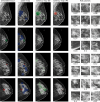Unveiling the black box: A systematic review of Explainable Artificial Intelligence in medical image analysis
- PMID: 39252818
- PMCID: PMC11382209
- DOI: 10.1016/j.csbj.2024.08.005
Unveiling the black box: A systematic review of Explainable Artificial Intelligence in medical image analysis
Abstract
This systematic literature review examines state-of-the-art Explainable Artificial Intelligence (XAI) methods applied to medical image analysis, discussing current challenges and future research directions, and exploring evaluation metrics used to assess XAI approaches. With the growing efficiency of Machine Learning (ML) and Deep Learning (DL) in medical applications, there's a critical need for adoption in healthcare. However, their "black-box" nature, where decisions are made without clear explanations, hinders acceptance in clinical settings where decisions have significant medicolegal consequences. Our review highlights the advanced XAI methods, identifying how they address the need for transparency and trust in ML/DL decisions. We also outline the challenges faced by these methods and propose future research directions to improve XAI in healthcare. This paper aims to bridge the gap between cutting-edge computational techniques and their practical application in healthcare, nurturing a more transparent, trustworthy, and effective use of AI in medical settings. The insights guide both research and industry, promoting innovation and standardisation in XAI implementation in healthcare.
Keywords: Explainable AI; Medical image analysis; XAI in healthcare; XAI in medical imaging.
© 2024 The Author(s).
Conflict of interest statement
The authors have no conflict of interest.
Figures









References
-
- Ranjbarzadeh R., Caputo A., Tirkolaee E.B., Ghoushchi S.J., Bendechache M. Brain tumor segmentation of mri images: a comprehensive review on the application of artificial intelligence tools. Comput Biol Med. 2023;152 - PubMed
-
- Bai J., Posner R., Wang T., Yang C., Nabavi S. Applying deep learning in digital breast tomosynthesis for automatic breast cancer detection: a review. Med Image Anal. 2021;71 - PubMed
-
- Leopold H., Singh A., Sengupta S., Zelek J., Lakshminarayanan V. Recent advances in deep learning applications for retinal diagnosis using oct. Tate Art Neural Netw. 2020
-
- Janik A., Dodd J., Ifrim G., Sankaran K., Curran K. Medical imaging 2021: image processing. vol. 11596. SPIE; 2021. Interpretability of a deep learning model in the application of cardiac mri segmentation with an acdc challenge dataset; pp. 861–872.
-
- Meyes R., de Puiseau C.W., Posada-Moreno A., Meisen T. Under the hood of neural networks: characterizing learned representations by functional neuron populations and network ablations. 2020. arXiv:2004.01254 arXiv preprint.
Publication types
LinkOut - more resources
Full Text Sources
Miscellaneous
